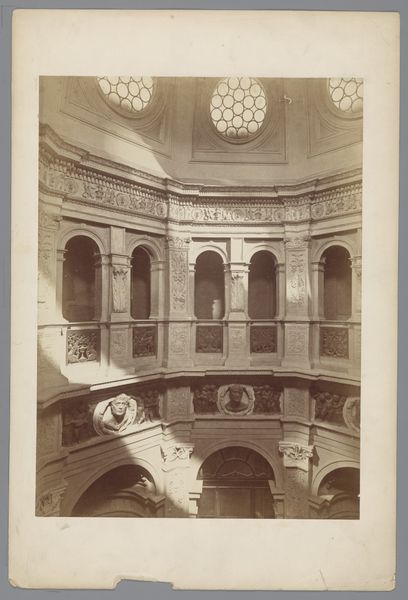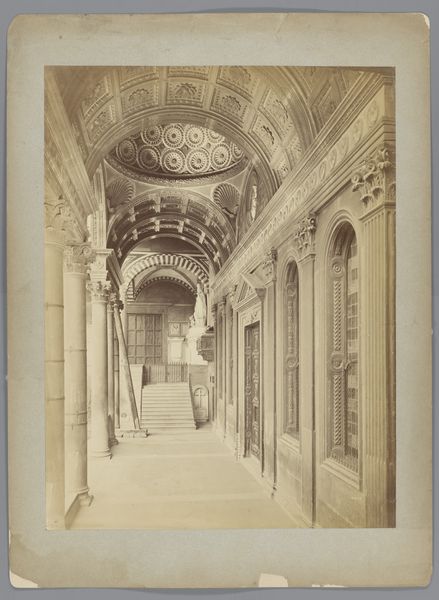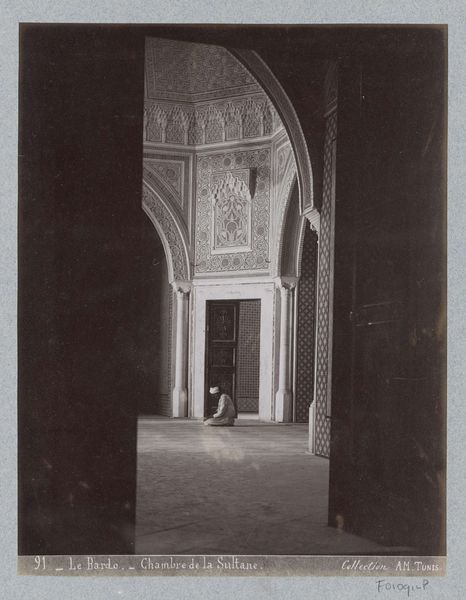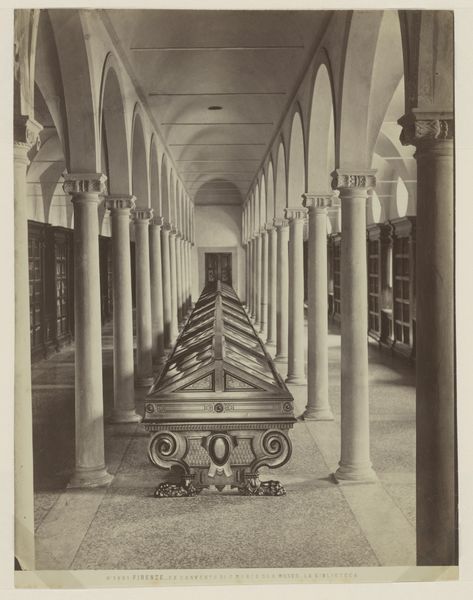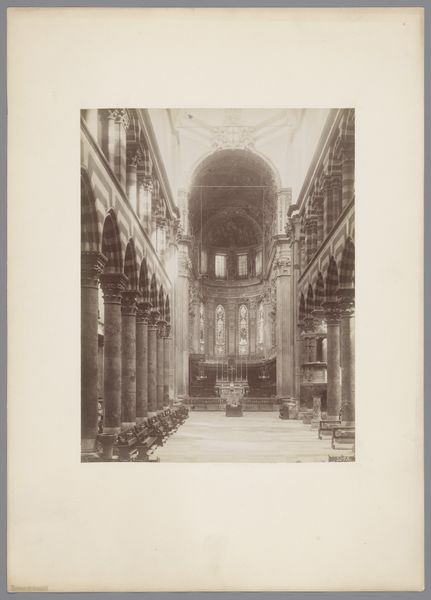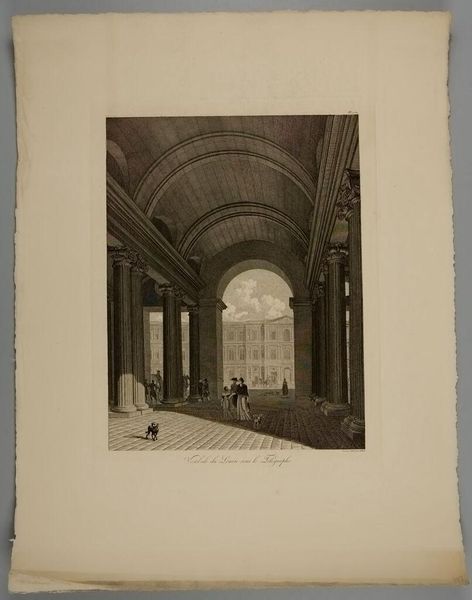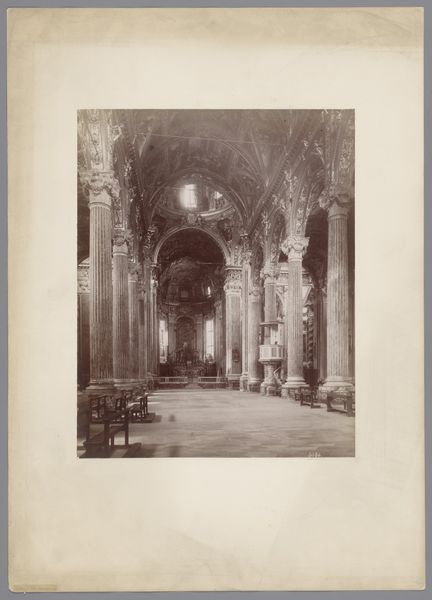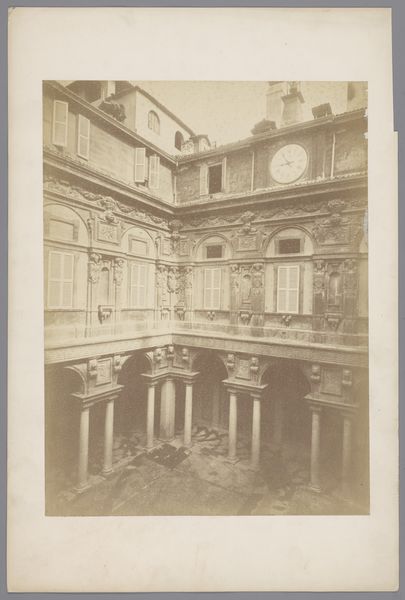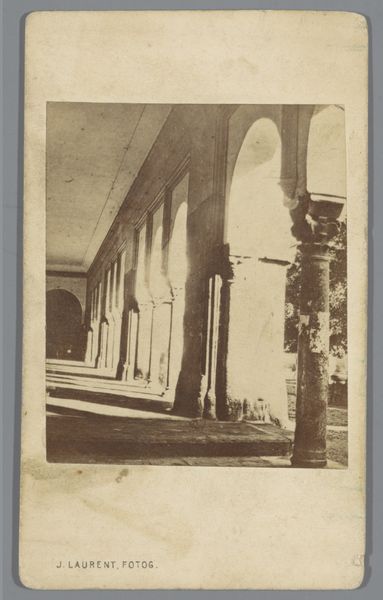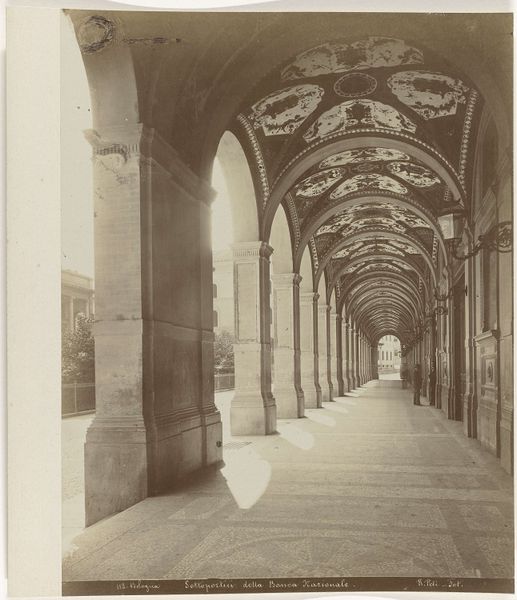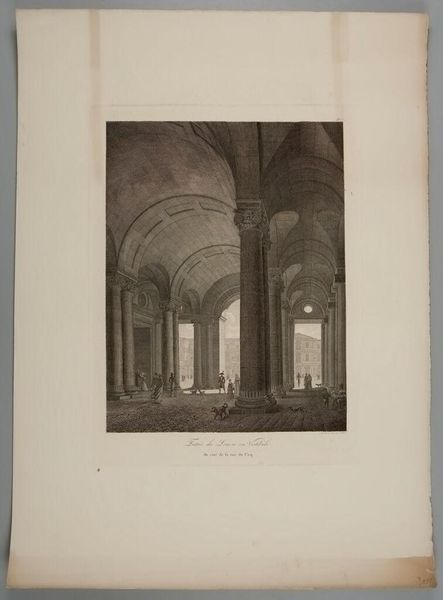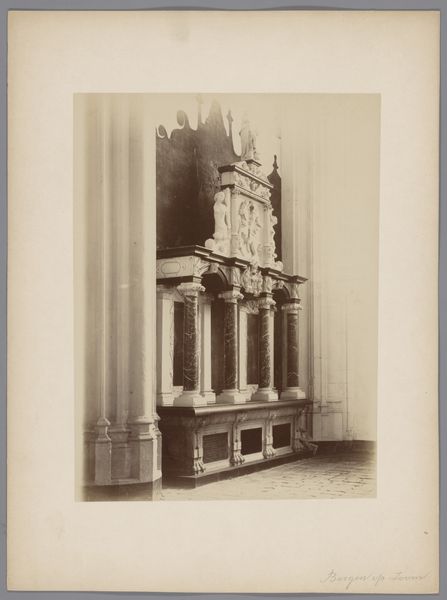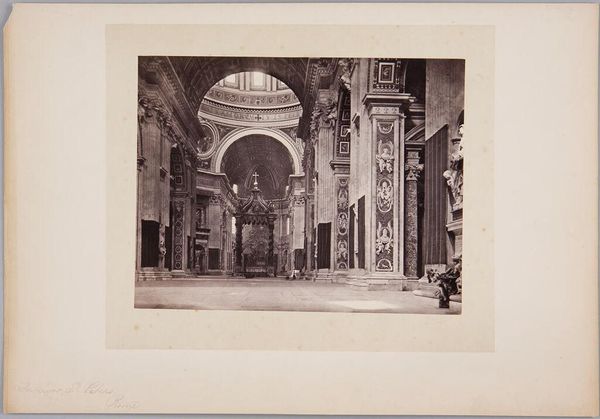
Interieur van het stadhuis van Parijs na de brand tijdens de Commune van Parijs 1871
0:00
0:00
Dimensions: height 253 mm, width 189 mm, height 466 mm, width 347 mm
Copyright: Rijks Museum: Open Domain
Curator: This gelatin silver print, taken by Charles Soulier in 1871, is titled "Interieur van het stadhuis van Parijs na de brand tijdens de Commune van Parijs" Editor: What strikes me is the echoing repetition of arches receding into the distance. The cool tones enhance the desolate stillness of the gutted interior. It’s an austere composition. Curator: Indeed. This photograph documents the devastation inflicted on the Hôtel de Ville during the Paris Commune, a brief but brutal period of revolutionary governance. Soulier’s photograph captures the political trauma etched onto the city’s architecture. Editor: Notice the classical architecture reduced to a shell. The light becomes the main structural element. It pierces through the skeletal remains, casting elongated shadows, yet even these linear patterns echo the arches and columns. Curator: Precisely, the Romantic style here serves a clear political purpose, highlighting not only the scale of the damage but also indicting the Communards and prompting reflection on the fragility of established power. The image became part of a narrative constructed against them. Editor: I'm struck by how Soulier uses depth and perspective to create this unsettling, endless vista of ruin. The human figure on the floor gives the scene scale, emphasizing abandonment, but its tonality nearly disappears into the stones and shadow. The composition makes us feel swallowed by this destruction. Curator: Consider the contemporary viewer: these photographs circulated widely and influenced public opinion about the Commune, underscoring how photography can be weaponized, framing historical narratives and fixing memories in collective consciousness. Editor: So, beyond its aesthetic impact, this image offers a lesson in how photographic choices serve and reflect broader historical movements. Its structure creates that impact; shadow, repetition, and ruin define it and contribute to the communication of complex messages about politics. Curator: Right, understanding art, and here especially, photography, requires sensitivity to social and political context—but close visual reading does give the work extra dimensions of emotional complexity. Editor: It has given me an increased appreciation for how choices in composition work to communicate, not just to display historical event, but an experience of traumatic loss.
Comments
No comments
Be the first to comment and join the conversation on the ultimate creative platform.
